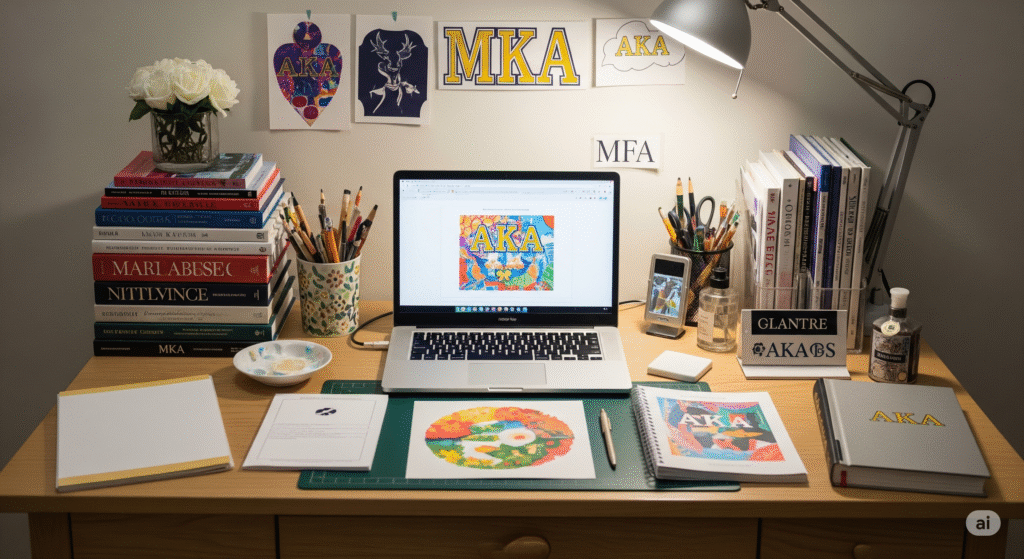The goal of “aka mfa setup ” is to make your Microsoft account even more secure. I was able to use it to attach my email, phone number, or authenticator app for two-step verification. AKA MFA Setup protects my data from hackers and unauthorized access by requesting a second confirmation each time I log in.
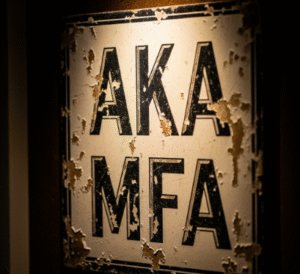
AKA MFA: What is it?
Simply put, AKA MFA is a method of enhancing account security beyond a username and password. The “AKA” stands for “Also Known As,” which denotes a second authentication method that might be biometric recognition (such as a fingerprint), an authentication app or even a text message.
Merely using a password is insufficient in light of the increasing prevalence of cybercrime, particularly phishing attacks and data breaches.
Multi-factor authentication (MFA) makes it far more difficult for hackers to access your account, even if they can still readily guess or steal passwords.
What Makes AKA MFA So Vital?
Consider this: if MFA is enabled, you can still prevent someone from using your password. The following explains why AKA MFA is revolutionary:

- Boosts Account Security: A basic password is insufficient. You must present two or more forms of identification when using MFA.
- Lowers the Chance of Unauthorized Access: Your secondary authentication mechanism (like your phone) would still need to be accessible even if your login credentials were stolen.
- Protects Sensitive Information: AKA MFA provides a crucial security layer for anyone handling bank records, personal information or sensitive company information.
Now that you know how important it is, let’s get started with setting up AKA MFA efficiently.
Detailed Instructions for Setting Up AKA MFA
1. Verify Your Account’s MFA Support
First, confirm that MFA is supported by the platform or service you are using. MFA is frequently supported whether you are utilizing cloud services like Google or Microsoft, financial apps and social media sites like Facebook.
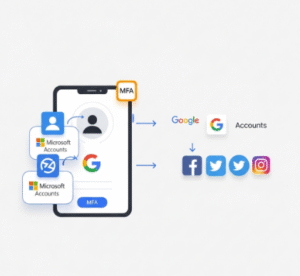
- Microsoft Accounts: Go to the security settings for your Microsoft account.
- Google Accounts: Navigate to the Google account’s security section.
- Social Media: MFA is available in the “Security and Login” settings for Facebook, Instagram & other platforms.
2. Select the Method of Authentication
AKA MFA is capable of using several authentication techniques. There are a number of options available to you, depending on the service. The most well-liked ones are as follows:
- Code by SMS or Email: You will receive a one-time code by email or SMS after inputting your password. This code must be entered in order to finish the login procedure.
- Authenticator App: Time-based codes are generated by apps such as Microsoft Authenticator and Google Authenticator. Because it is more difficult for hackers to intercept them, these are more secure than SMS.
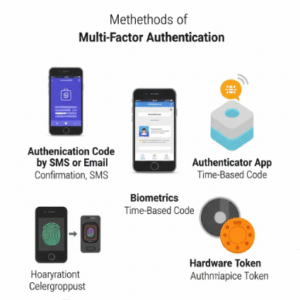
- Biometrics: This could involve fingerprint or facial recognition. Although it’s the safest type of MFA, not all services might support it.
- Hardware Token: Yubikeys and USB tokens are examples of tangible devices used by certain high-security accounts. To verify your identification, you will either insert or tap the device.
An authenticator app is among the greatest options for the majority of consumers. It is safe, cost-free and independent of interceptable text messages.
3. Make sure your account has MFA enabled.
It’s time to activate MFA after you have determined whatever approach suits you the most. Here’s how to accomplish it:
👉Regarding Gmail and Google Accounts:
Open your Google account and log in: Navigate to the Google Account Settings.
Locate the “2-Step Verification” option under “Signing into Google” in the Security Section.
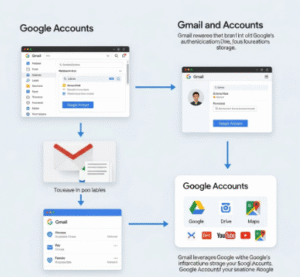
- Turn on 2-Step Verification: To add your phone number or an authentication app, follow the directions.
- Verify Your Device: After Google asks you to confirm the authentication method you selected, you’re ready to go!
👉Regarding Microsoft Accounts:
- Open your Microsoft account and log in: Go to the Security Settings in Microsoft.
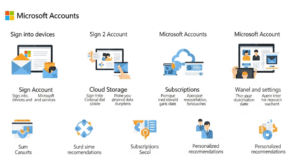
Find the “Set up two-step verification” option under “Advanced Security Options.”
- Select Your Approach: Microsoft offers you a number of options, such as using the authenticator app or calling the number.
- Verify Your Configuration: To make sure the technique is functioning properly, you must test it.
👉Regarding Facebook:

- Go to Facebook’s Settings: Click the arrow in the upper right corner of your Facebook page, then choose “Settings & Privacy.”
- Security and Login: Select “Security and Login” from the left sidebar.
Turn on two-factor authentication by following the directions to link an authentication app or get a code sent to your phone.
4. Options for Backup and Recovery
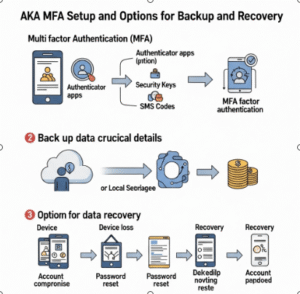
Setting up recovery mechanisms in case you lose access to your second factor—such as your phone—is a crucial part of MFA. The majority of services allow you to:
Include backup codes, which are one-time codes you can use in case your authentication mechanism is lost.
Create a Backup Authentication way: Some services allow you to add more than one way, such as an SMS and an app.
5. Remain Alert
You should continue to use caution even after you have set up MFA. Remain alert and watch out for phishing emails and dubious login requests. Additionally, check the security settings for your account on a regular basis.
Conclusion: The Importance of AKA MFA
You may improve your online security and protect your accounts from unwanted access now that you know how to set up AKA MFA, my friend. The extra degree of security that MFA offers is essential, whether you are protecting critical company information or personal accounts.
Although no security mechanism is 100% reliable, keep in mind that Multi-Factor Authentication significantly reduces the likelihood that hackers will be able to access your data.
It is quite effective at protecting your accounts, free and simple to set up.Check out their own help guides for more thorough advice on configuring MFA for various services.
Check out this fantastic solution for a smooth experience if you are interested in investigating products that assist you in safely managing MFA.Use MFA now to protect your online environment and be safe!
Read more: Setup face id greyed out ❤️
10 FAQ’S:
Describe AKA MFA.
It represents “Also Known As Multi-Factor Authentication”—an extra degree of protection.
What makes MFA significant?
It keeps accounts safe even in the event that passwords are stolen.
What are typical MFA techniques?
Biometrics, authenticator applications, and SMS codes.
Is MFA via SMS secure?
Although applications are more secure, it’s still better than nothing.
Which app is suitable for MFA?
Either Microsoft Authenticator or Google Authenticator.
In Google, where do I activate MFA?
Under “2-Step Verification” in the security settings.
Is MFA compatible with Facebook?
In the “Security and Login” options, indeed.
What would happen if my phone disappeared?
Make use of recovery options or backup codes.
Is it difficult to set up MFA?
No, it only takes a few of minutes.
Are passwords replaced by MFA?
No, it follows your password with an additional step.

